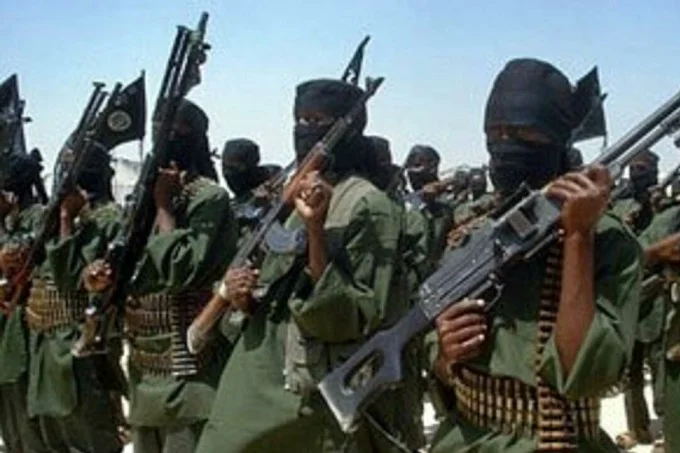The broken horn of Africa: who are Al-Shabaab?

Somalia is often referred to as the Horn of Africa for the morphological uniqueness of its territory. This particularity has allowed the country to be a focal point of the maritime trade routes of the entire world. Even the then Soviet Union and the United States understood its economic potential during the Cold War.
Today Somalia finds itself divided into different areas of influence, and the advance of terrorist groups represents a severe problem for the stability of the Horn. According to data transmitted by the CIA, two terrorist groups in the country contribute to the destabilization of the Somali federal government: Al-Shabaab and the ISIS networks operating in Puntland, the semi-autonomous region to the northeast.
In this article, we will examine in three pieces the case of Al-Shabaab (from the Arabic, “The Youths”), the jihadist terrorist group that has been raging in southern Somalia for 16 years now and on the borders with Ethiopia and Kenya. Militias capable of resisting both the American counter-offensive and the peacekeeping mission conducted by the African Union Mission in Somalia (AMISOM) approved by the UN Security Council in 2007.
The origins of the Al-Shabaab
The hard life under the regime of General Muhammad Siad Barre (1969-91) and the consequent civil war, unfortunately, created a habitat favorable to the formation of rebel groups capable of facing the weakness of central governments face-to-face.
In the 1960s, the growing influence of Islamist movements began to be felt, which oppose the traditional Somali Sufi Islam. Thus begins to make its way a political Islam supported by groups such as Al-Islah of the Muslim Brotherhood, represented up to now within the government.
A network instead conceives Harakat Al-Shabaab Al-Mujahideen (better known as Al-Shabaab) of veterans from Afghanistan in close contact with Al-Qaeda who were only waiting for the right time to emerge in the Horn of Africa.
The ideal group within which to take shape was Al-Ittihad Al-Islami (AIAI, “Union of Islam”), Salafist militants who grew up between the fall of the Barre regime in 1991 and the outbreak of the civil war, whose purpose was to establish Islamic law in Somalia. Somali extremists emigrated to the Middle East for their religious studies and returned home after obtaining some funding and armaments from the links created with Osama Bin Laden, then head of Al-Qaeda.
How did Al-Shabaab become?
In the early 2000s, AIAI’s old guard points to the creation of a political front, while the younger members – the future “youths” – yearn for a tougher line for the spread of Sharia law. The Al-Shabaab thus move away from the AIAI and form an alliance with the Islamic Courts Union (ICU), an umbrella organization of a political-legal nature composed of eleven Sharia courts operating between 2000 and 2006 in Mogadishu, whose leader was Sharif Sheikh Ahmed – Somali president from 2009 to 2012.

Although they are juridical-clerical figures in favor of applying Islamic law, the aspect of the spread of Islam was not their ultimate goal. Their interests focused on maintaining local control by subduing the other clans and resolving the anarchist vacuum caused by the warlords that emerged with the fall of the regime.
In line with their mission, the Al-Shabaab militias decide to serve the ICU as their armed wing. The United States managed to take control of the capital Mogadishu in June 2006. The shock wave of such a victory has raised strong concerns in neighboring states – especially Ethiopia – and internationally for the emergence of a jihadist threat in the Horn of Africa, now broken by regional particularities.
The doctrine of Al-Shabaab
Al-Shabaab is more than a militia capable of carrying out terrorist attacks inside and outside the country. As mentioned above, it is a product exported to Somalia by the expansion of Al-Qaeda.
Adopt a doctrine based on Salafist and Wahhabi precepts, which is why there are:
- A rejection of all kinds of innovation within the Islamic religious tradition – in particular, Somali Sufi Islam;
- The use of jihad to subvert the central government, which is considered a non-Muslim or anti-Muslim occupier;
- The use of the so-called takfir, a pronouncement by which a Muslim can declare another Muslim apostate or unbeliever – despite being a much-discussed concept and not universally shared by the Islamic community.
- In the areas under their control, the Shabaab force populations to strictly respect their interpretation of Shari’a: they force marriages, forbid shaving of the beard, and prohibit various entertainment activities, from broadcasting movies to listening to music.
From a criminal point of view, the group punishes those who commit adultery with stoning, while amputation is foreseen for those guilty of theft and beheading for apostates.
In addition, the group categorically prohibits cooperation with humanitarian agencies. Aid intended for the Somali population to cope with the famine that began in 2017 is being blocked in controlled areas. This has forced nearly 800,000 Somalis to leave their homes in militia-occupied territories and begin the desperate search for food and medical care.
The Shabaab to the Somali community
The effects of the last two decades of Somali history – from the deposition of General Barre to the fratricidal clashes between warlords – have proven more erosive than constructive. In fact, neither democracy, Marxist nationalism, or clan tradition have guaranteed long-term stability for the country.
Since 2006, religion has had room to surface as a political ideology. In the absence of state structures, the population has trusted the Islamic Courts Union to restore law and order by entrusting them with most civil disputes, especially family matters.
In December 2006, intervention by US-backed Ethiopian forces put the ICU on the run, but Al-Shabaab militias decided to stay. The Ethiopian presence – of Christian faith – has only exacerbated the Somalis’ hatred of the invader and intensified recruitment from the ranks of the terrorist organization. Under these conditions, the Shabaab have managed to hybridize the liberation struggle and jihadism.
Their struggle takes shape starting from education and external communication: from the teaching rooms created inside the training camps, where senior officers give speeches to new recruits about the group’s ideology and combat techniques, to reading sermons in mosques.
The group leverages extensive media coverage of its message to reach the ideal target group: local people exhausted by misery, sympathizers in East Africa, and young Somali expatriates. Al-Shabaab broadcasts its radio channels by seizing local stations, constantly uses tweets, produces YouTube videos that invite people to join the jihad, and disseminates everything on its blogs publicly, presenting itself as the alternative to the collapse of central institutions and the most immediate solution to the presence of foreign troops on Somali territory.
The ultimate goal
The creation of a “Greater Somalia” that would include Somalia, Kenya, Ethiopia, and Djibouti in the form of a single caliphate is the ultimate goal to be achieved within the Shabaab mission.
As Bronwyn Bruton, deputy director of the Africa Center of the Atlantic Council, explains: “the group’s objectives have changed over the years due to a possible internal fracture that sees on one side, nationalist militants interested only in deposing the central government, while on the other, militants eager to expand beyond the borders”.
Again taking up his words, “the unifying idea shared by all members of the group is the undisputed opposition to the central government accused of being supported and manipulated by the West”.
Conclusions
Although it is estimated that the group counts between 7,000 and 15,000 fighters, it is not said that they are really popular in the Somali community. Locals suffer day after day the negative effects of the group’s presence in their lives: they are subject to payment of bribes and taxes such as zakat – alms provided by the Quran and one of the five pillars of Islam – which is collected by village elders and passed on to the extremist group, physical intimidation, property damage, and increased youth unemployment.
This leads to a distortion of the Islamic religion and distrust among members of the same communities. Although most Somalis do not share their ideas, the population refuses to denounce them for fear of being killed or for lack of an alternative. This is inevitably leading to indirect support that increases their influence at the expense of the federal government.




